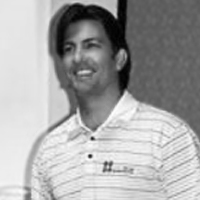Question
How would you perform core strengthening with upper limb amputees? Would you use techniques similar to the weight shifting techniques that you demonstrated?
Answer
Absolutely, I would use weight shifting techniques. I also do some exercises on balls and stability trainers. If you sit on a ball and perform an exercise, you automatically increase the activation of the core musculature, just by sitting on a ball. The important thing to remember is that when you sit on a ball, and perform that exercise, you are losing the ability for the arms to produce force. If I am sitting on a ball, and I am doing a biceps curl, even with my amputated arm, I am going to have less force production out of that arm, because my body is concentrating on sitting on the ball. You make sure the sets, repetitions and/or the color of theraband is not too difficult for them, so that they can then perform the exercise with their arm, but also get some core activation.
I would also work on doing things while standing on stability trainers. On two feet or one foot, be it foam or air, there is a specific progression that you can take. It is important though that when you are doing all those things, you have to remember that the force production is going to be less. If someone performs a red Thera-Band, three sets of 20 reps, and that puts them into that somewhat hard exercise range, you should not give the red Thera-Band three sets of 20 reps if they are going to sit on a ball, stand on a stability trainer, or stand on one foot on the ground. If they are going to have to be focusing on standing upright, they will lose force production.
